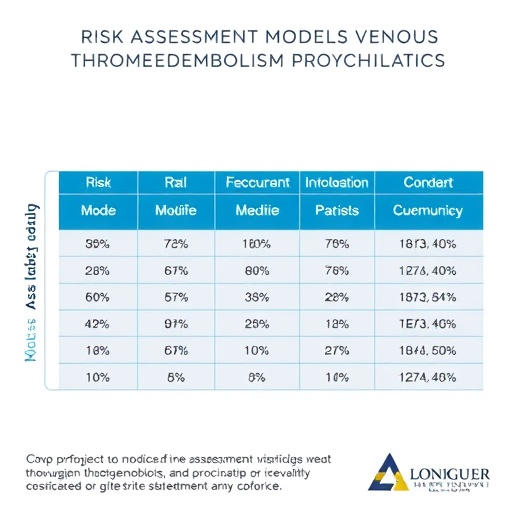ROCHESTER, Minn. — In a new study published in Prosthetics and Orthotics International, Mayo Clinic researchers describe the direct medical costs of falls in adults with a transfemoral amputation. In this type of amputation, the leg is amputated above the knee. This work "provides a comparison for policymakers when evaluating the value of more expensive … technologies," say the authors.
Every week in the U.S., more than 3,500 people have a transfemoral amputation. However, of the 185,000 new amputee patients each year, only 25-30 percent receive a prosthetic leg and knee.
Of those who receive a prosthetic leg and knee, the policies that govern insurance payments grant basic mechanical knees for most. Despite growing data that newer technology reduces falls and improves physical capabilities, only high-functioning patients (based on mobility and activity levels) are deemed eligible for a knee with microprocessor technology.
A team of Mayo Clinic researchers would like to change that.
"We want to help provide the best quality of life and prosthesis for each individual," says Benjamin Mundell, Ph.D., the study's lead author. Dr. Mundell, a trained health economist who is currently a medical student at Mayo Clinic School of Medicine, says, "It is important to look beyond the initial cost differences of a microprocessor knee compared to a mechanical knee and understand what downstream costs might be avoided with a better prosthesis."
"Microprocessor knees are designed to help improve balance and reduce falls," he says. "The fear of falling for those with mechanical knees likely reduces their overall physical activity and if they do fall and require hospitalization, the cost of care is almost as expensive as a microprocessor knee."
Data and costs
Using the Rochester Epidemiology Project, a health records linkage collaboration in Minnesota and Wisconsin, the team examined the records of 77 individuals receiving a transfemoral amputation between 2000 and 2014. They found that 46 of these patients had received a prosthetic knee. Of these, 22 individuals experienced 31 falls that resulted in an emergency department visit or hospitalization. If they fell more than once during an 18-month period, both incidents were excluded from the cost analysis to prevent misalignment of costs.
What the researchers found, using standardized Medicare cost data from the Rochester Epidemiology Project's new Cost Data Warehouse, was that the average additional cost in the 6 months following a fall can be substantial. The additional fall cost for individuals requiring an emergency department visit was $18,000. For patients who had to be hospitalized, this extra expense was more than $25,000.
"Understanding the costs is part of basic health economics," says Kenton Kaufman, Ph.D., the study's senior author, who is a biomedical engineer and orthopedics researcher at Mayo Clinic. "This study quantifies the cost of falls that require medical attention – providing evidence that it may not be economical to withhold microprocessor knees from patients with moderate ambulatory capabilities."
He believes the costs to patients are much higher than the study shows.
"We know our cost estimate underestimates the true cost of a fall, because we didn't include indirect costs, such as lost wages, caregiving expenses and transportation costs," says Dr. Kaufman.
Better knees, please
Medicare Functional Classification Levels, also known as K levels, are used to determine which prosthetic device is medically necessary for a patient.
"Shouldn't the goal be to provide the best quality of life?" asks Dr. Mundell.
"Value is the new metric in health care as we try to contain costs," he says. "Part of understanding the value of advanced medical devices is measuring what future costs they can help patients avoid. Measuring the quality of life a device provides for each individual is difficult. We focused on the costs of falls — events that microprocessor knees are designed to help avoid. A policymaker or payer can then look at the cost of a device and compare it to the cost of an adverse event that the device can prevent when deciding whether or not the device offers additional value."
Medicare Functional Classification Level 2, in which the patient is described as having "the ability or potential for ambulation with the ability to traverse low-level environmental barriers, such as curbs, stairs or uneven surfaces," nets a mechanical knee.
To be considered Level 3 or 4 (on a scale 0-4), and thus eligible for the microprocessor knee, a patient needs extensive physician documentation that he or she is likely to engage in activities that would use the leg more than the normal day-to-day walking, stairs, etc., that are part of an average American adult's lifestyle.
"For many, the default may be a mechanical knee, because it is easier to prove basic necessity than to ensure the rigorous documentation requirements for one with advanced — and more costly – technology," says Dr. Kaufman.
"One of the reasons we work on improving technology in prosthetic knees is to help individuals become more agile, more balanced and less likely to fall," says Dr. Kaufman. "But if people aren't able to access this technology, they may become more vulnerable and less active than their condition would normally indicate."
"We hope that our research increases understanding of the cost-benefit equation from the patient's perspective," Dr. Kaufman says. "Greater mobility gives people more freedom to live healthier lives."
###
This study was supported by the American Orthotic and Prosthetic Association; the Mayo Clinic Robert D. and Patricia E. Kern Center for the Science of Health Care Delivery; and the Rochester Epidemiology Project, which receives administrative and financial support from the center.
About the Rochester Epidemiology Project
The Rochester Epidemiology Project is a collaboration of clinics, hospitals, and other medical and dental care facilities in southern Minnesota and western Wisconsin. Founded by Mayo Clinic and Olmsted Medical Center in 1966 in Olmsted County, Minnesota, the collaboration stretches across 27 counties. Olmsted County Public Health Services is its first public health member. This collaboration and sharing of medical information makes this area of Minnesota and Wisconsin one of the few places where true population-based research can be accomplished. For more information about the Rochester Epidemiology Project, visit the Rochester Epidemiology Project website.
About Mayo Clinic
Mayo Clinic is a nonprofit organization committed to clinical practice, education and research, providing expert, whole-person care to everyone who needs healing. For more information, visit mayoclinic.org/about-mayo-clinic or newsnetwork.mayoclinic.org.
Media Contact
Elizabeth Zimmermann Young
[email protected]
507-284-5005
@MayoClinic
http://www.mayoclinic.org/news
http://newsnetwork.mayoclinic.org/discussion/prosthetic-knee-type-may-determine-cost-of-care-for-amputees/




